
Enjoy Nature and Culture! Top 5 Sightseeing Spots along the Hokuriku Shinkansen Route
The Hokuriku area on the side of the Sea of Japan in Honshu is home to a long list of spots where you can enjoy beautiful nature and traditional architecture. Below are five recommended sightseeing destinations that are easily reached via the Hokuriku Shinkansen (bullet train) from the heart of the metropolis.
This post may contain affiliate links. If you buy through them, we may earn a commission at no additional cost to you.
1. Kanazawa Castle and Kenroku-en Garden (Kanazawa Station)
Kanazawa Castle and Kenroku-en Garden are two major spots that are also said to be the symbols of Kanazawa. Kanazawa Castle is where generations of feudal lords resided starting 1583. It is filled with must-see features, such as the Ishikawa-mon Gate (designated as a national important cultural property) which is famous as a spot for taking souvenir photos, Hishi-Yagura (Diamond Turret) and Gojukken Nagaya (storehouse for weapons).
Kenroku-en Garden, known as one of the three most beautiful gardens in Japan, is a garden where you can walk around the pond in the center. Inside this vast garden that measures more than 100,000 sq.m., you can enjoy the beauty of nature that changes every season.
Kanazawa Castle entrance fee (Hishi-Yagura, Gojukken Nagaya, Hashizume-mon Tsuzuki Yagura and Hashizume-mon): Adults (18 years old and above): 310 JPY, Children (6 – 17 years old): 100 JPY
Kenroku-en Garden entrance fee: Adults (18 years old and above): 310 JPY, Children (6 – 17 years old): 100 JPY

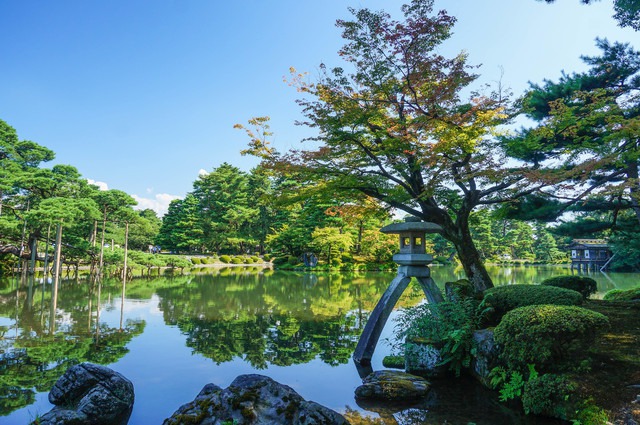
2. Yamachosuji (Shin-Takaoka Station)
Yamachosuji is a town where many traditional buildings remain intact, landing it the designation of Important Preservation District for Groups of Traditional Buildings. Famous for the large number of machiya (traditional townhouses) adopting the “dozo-zukuri” (house built like a storehouse with earthen walls) style of architecture, this town is lined with heavy buildings with exteriors covered in mud walls with a coating of plaster. If you look closely, you will see that the buildings in this area are characterized by their Western-style designs such as brick firewalls. Within the dozo-zukuri buildings in Takaoka, however, what you have to see is the Sugano Residence. With its superior scale, quality and level of preservation, this house has been designated as an important cultural property.
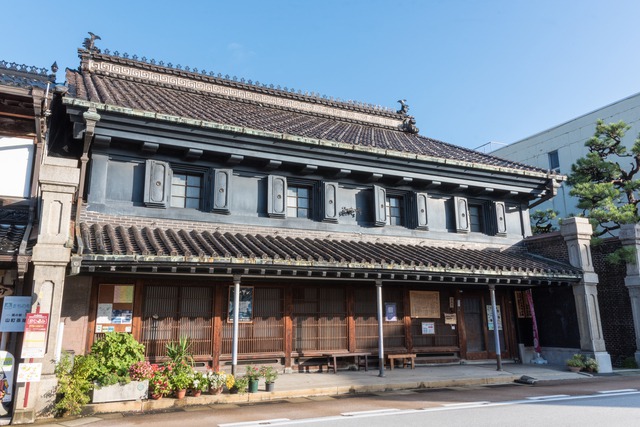
3. Kurobe Gorge (Kurobe-Unazukionsen Station)
Kurobe Gorge is one of the steepest V-shaped gorges in Japan, and is located midstream of Kurobe River. Its precipitous cliffs with a vertical drop of 1,500m to 2,000m, and rapids that sparkle an emerald green create a dynamic landscape. To better enjoy the beauty of this gorge, it is recommended to ride the the Kurobe Gorge Railway, winds through the valleys. The 20.1km distance from the start point up to the end point takes 80 minutes on this train, one way. There are also onsen (hot spring) and other attractions along the route.
※The Kurobe Gorge Railway usually runs from late-April through to November. Check the official homepage for details.
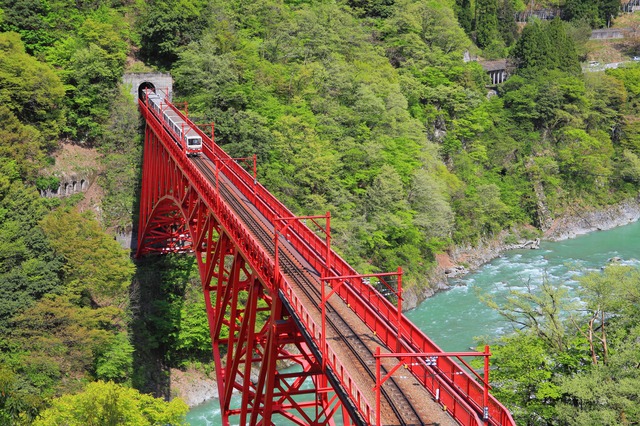
4. Kotakigawa Jade Gorge (Itoigawa Station)
Itoigawa is famous for hisui (jade). All the jades excavated from ruins in Japan were apparently produced in this area. Kotakigawa Jade Gorge (Kotakigawa Kogyoku-sanchi), the leading producer of jade in this area, is a famous spot that has been designated as a natural monument of Japan. If you look at the clear stream of Kotakigawa (Kotaki River), you will see raw jades scattered in the area (picking of rocks is prohibited). And if you look up, you will get to enjoy a grand view of the towering great cliff of Mt. Myojosan.
※ This is not passable during winter. Check the official homepage for details.
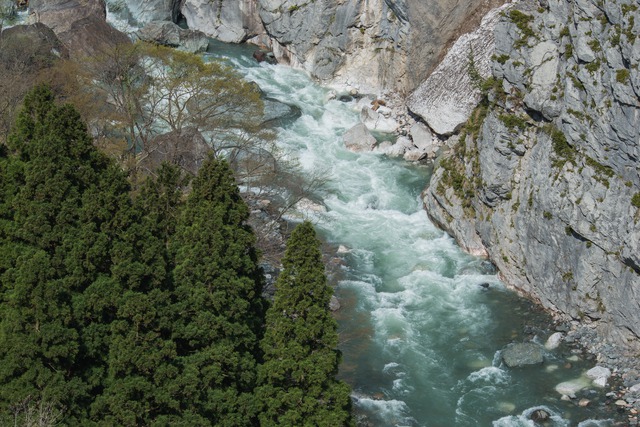
5. Zenkoji Temple (Nagano Station)
Zenkoji Temple is an ancient temple that was built over 1,300 years ago. They say that if you pray while chanting a Buddhist prayer, you will be led to gokuraku jodo (paradise). It used to be so famous that it was considered a temple that “you must visit once in your lifetime”. The highlight of this temple is the hondo (main temple building) that has been designated as a national treasure of Japan. This stately building is one of the largest in Eastern Japan, with width of about 24m, depth of about 54m and height of approximately 29m. It is a unique structure built in the shumoku zukuri (wooden bell-hammer structure) style, characterized by its T-shaped design where there is a long and massive raido (worship hall) in front of the Butsudo (Buddhist temple). Some of the other attractions here are the sanmon (main gate) and kyozo (scripture house) that have been designated as important cultural properties of Japan.
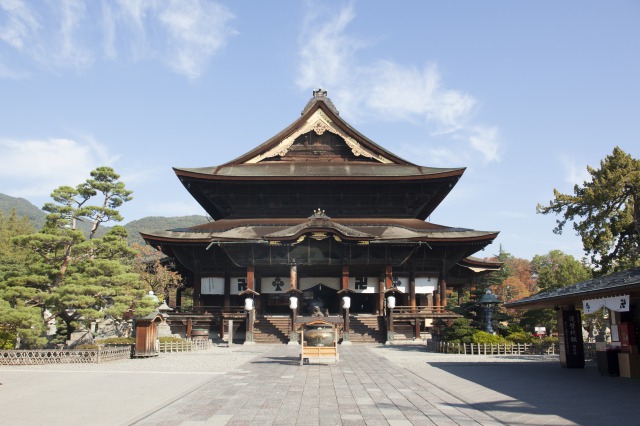
There are many other attractive spots in the Hokuriku area. So, please come and see them for yourself.
The information in this article is accurate at the time of publication.




